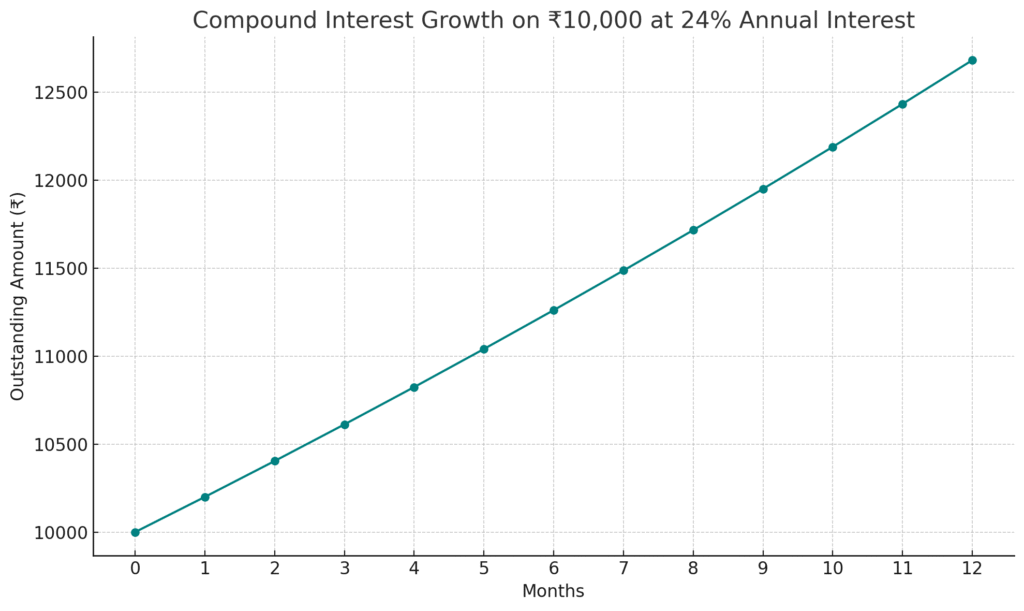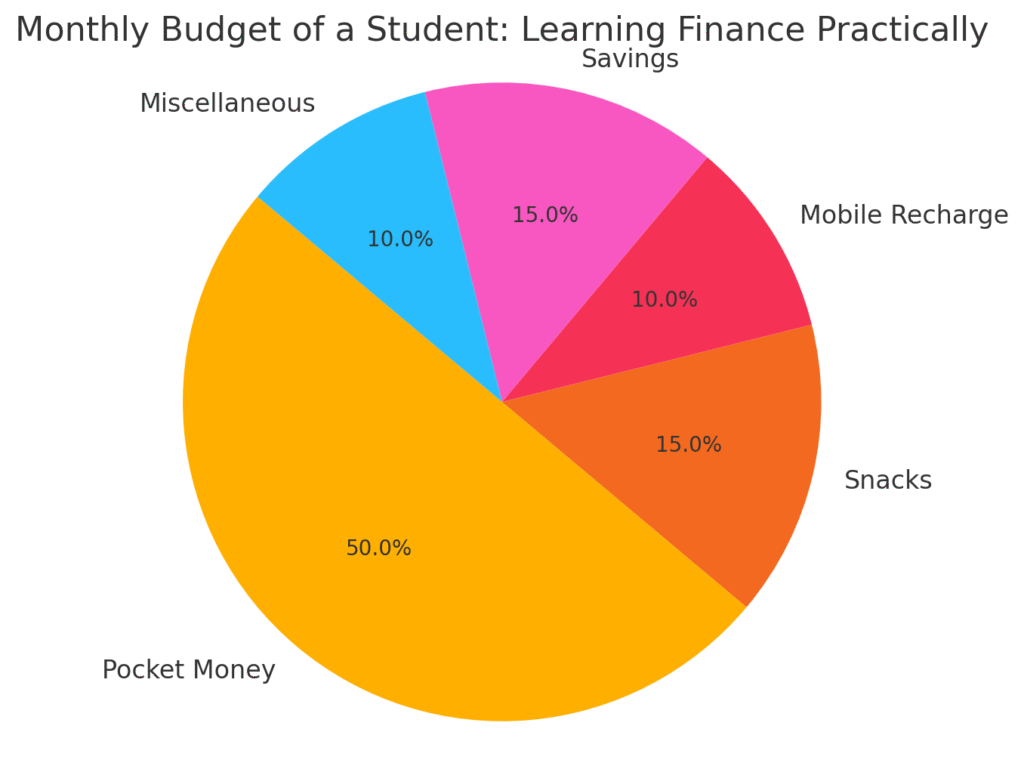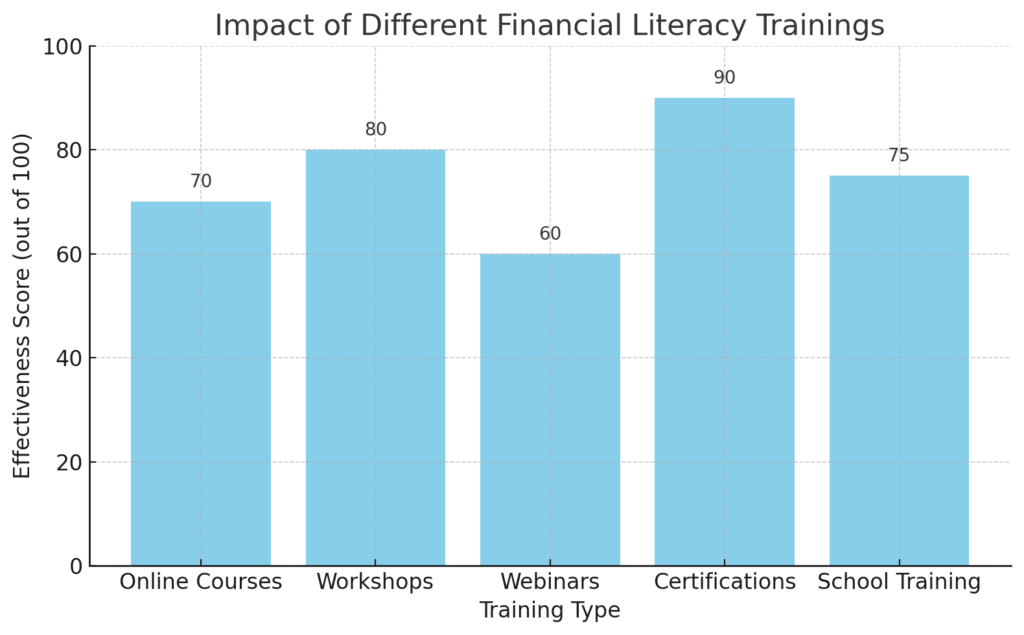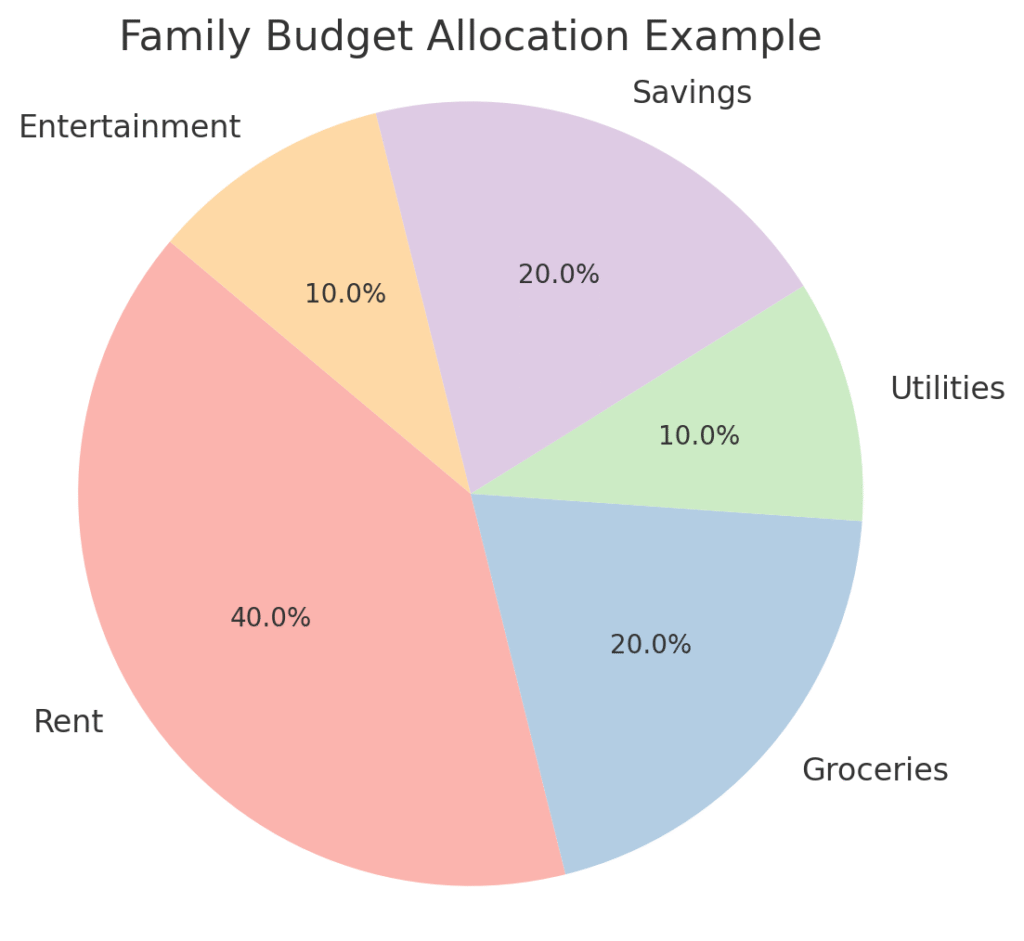“Consider finishing school and knowing how to solve sophisticated mathematical
problems, recite Shakespeare’s works, or identify every organ in the human anatomy, yet
being clueless on how to use a budgeting app, interpret a bank statement, or appreciate
the implications of accruing credit card debt. This is the quiet fracture in the education
system – a fracture that leaves countless young Indians stranded in the aggressively
demanding real world. In a world where everything from digital payments to taking loans
is just a click away, the status quo of not teaching financial literacy in schools is beyond
obsolete – it is outright perilous.”
FINANCIAL
LITERACY
IS A SKILL,
NOT A GIFT.
– SUZE ORMAN
“The Hidden Crisis: Why
Financial Education in
Schools are a Must-Have”
Financial literacy holds crucial importance in life’s details, such as purchasing a house or
strategizing for retirement. It is frequently observed that students graduate without necessarily lacking the skills that will be inevitably needed down the road. Preparing
students for the professional world is critical, prioritizing crucial elements such as
budgeting and saving, and making essential and educated financial decisions.
Financial literacy gaps originate in school. Science, Math, and History are prioritized
heavily, while understanding how to utilize a salary, comprehend a credit, or strategize for
the future are sidelined. This absence does not stand alone. According to a report by the
National Centre for Financial Education (NCFE), 76% of Indians are considered financially
illiterate, putting students at a dire disadvantage as they enter the workforce. Without
understanding how simple taxes, personal finance, and debt work, these issues create
reckless adults undereducated on investments, taxes, and basic life skills.
But What If This Changed?
Consider the impact of making financial education a mandatory subject in all schools.
Financial literacy taught at an early age motivates students to make informed decisions
and prepares them to navigate the sophisticated financial world efficiently.
The advantages of including financial literacy in school syllabi are limitless:
● Enhanced Self-Confidence: With adequate literacy, students graduate into
adulthood with the capability to manage money effectively by saving, investing, and
spending, ultimately boosting self-confidence.
● Reduced Debt and Financial Stress: Understanding budgeting, loans, and interest
Rates help alleviate the likelihood of students falling into expensive debt traps,
thereby reducing stress in the long run.
● Creation of Future Financiers: Financial literacy empowers students aspiring to
begin their businesses. Students who grasp the fundamentals of income,
expenditure, and financial forecasting stand a higher chance of making it big in
business.
● Economic Impact: With sound decisions, financially literate individuals build
wealth, contribute to the economy, and diminish government dependence through
welfare programs.
“Where Does India
Stand? The State of
Financial Literacy in
Schools”
● Unfortunately, personal finance topics like financial literacy remain rudimentary in
Indian schools. Lack of personal finance education at the institutional level is
prevalent among state board schools, especially. Students are made to
understand the concept of compound interest, but they do not often relate
it to real-life scenarios involving credit card bills or loans.

Compound interest means you pay interest not just on the principal, but also on
the interest that has already been added. It’s a snowball effect— the longer you
wait to repay, the more your total dues grow.
📌 Formula:

● A = Total amount due
● P = Principal (initial amount borrowed)
● r = Annual interest rate
● n = Number of times interest is compounded per year
● t = Time (in years)
💳 Credit Card Example:
Let’s say you have a ₹10,000 balance on a credit card with a 24% annual interest
rate. That’s 2% monthly.
If you don’t pay off the balance, interest compounds monthly. After 12 months of
no payment:
● Your balance grows to ₹12,682.50
● That’s an extra ₹2,682.50 just in interest.
📈 What the Graph Shows:
● Each point represents the balance at the end of a month.
● The curve rises faster over time — that’s compound interest in action.
● The longer you wait, the more sharply the debt grows.
✅ Takeaway:
Understanding compound interest isn’t just academic — it helps you make better
real-life decisions. Paying even the minimum due on time or reducing balances
early can break the debt cycle and save thousands.
● Starting in 2022, the CBSE launched a new financial literacy syllabus for classes 6
to 10, which includes topics on digital banking, UPI, and money management. Most
schools did not adopt it, but NPCI supported it.
● Despite gaps in implementations, the NEP 2020 advocates for finance and digital
skills education at a foundational level. Schools have started offering workshops in
urban areas, but government and rural schools are yet to catch up due to a lack of
trained educators and overall resources.
● All students need to be financially educated in a practical manner that does not
discriminate against various regions or other types of secondary schools.
Designated educators are widely accepted to be trained in related subject areas, so
materials need to be available everywhere without hesitation or inconvenience.
Challenges in
Implementing Financial
Education in Schools
In a country like India, implementing financial literacy within the academic framework
poses unique hurdles despite its benefits.
● Inadequate Instructor Training
Incorporating personal finance education into the curriculum is not feasible because
most instructors do not have training in the subject area. This knowledge gap inhibits
their ability to teach financial concepts appropriately, resulting in half-baked teaching
devoid of any practical value. Students, upon graduation, are equipped with scant
relevant knowledge and skills.
● 📘 Content Restructuring Challenges
The existing school content already exceeds the available time for students while leaving
little to no room for adding new concepts. Financial literacy is often neglected because it
is not a core academic subject, but a primary life skill needed during the adult phase. To
be taught effectively, it requires thorough refinement, accompanied by curriculum
changes and educational board approval.
● 🌐 Rural Educational Inequities
The use of modern aids like digital and mobile banking finance tools poses a pitiful
educational discrepancy for students residing in underfunded schools, particularly those
situated in rural areas. Insufficient access to the internet and smart devices, as well as a
lack of virtual literacy programs and resources, contribute to the widening gap in
educational opportunities.
● 🚧 Bridging the Gap
India must improve access to teacher training, curriculum adaptability, and digital
resources to turn “financial literacy for students” into something beyond mere words.
Only then can it become a habit for every schoolchild across India.

The Rise of Digital
Financial Literacy in
Schools
In the fast-digitizing world, finance isn’t just about having a piggy bank anymore since it
involves mobile apps, UPI, and e-wallets. As schools recognize the importance of
adapting to modern technologies, students are exposed to new forms of mobile finance.
● The Elder Generation: A Shift from Cash to Clicks
Real-time transactions, budgeting, spending, and savings are being tracked through
mobile apps, and personal finance is becoming easier and more interactive for elders.
Now, assisting kids with pocket money is a whole new experience, as it is being paid
through UPI.
For instance:
Mobile banking apps assist students in tracking their expenditures and savings through
balances that gauge their limits and prevent overspending.
Paytm and PhonePe, like digital wallets, make payment systems easier for students.
Fun through gamified learning and apps makes learning about interests, saving goals, and
transaction history engaging and easy to comprehend.
● 🏫 Programs Initiating Education on Digital Financial Literacy
RBI’s Financial Literacy Week, SBI’s YONO for Youth, and many other NGO-sponsored initiatives seek to teach digital payments through workshops, videos, and simulations in
Schools. These initiatives focus on creating awareness about the following:
❖ Carrying out transactions online in a safe manner
❖ Understanding various digital payment systems
❖ Fraud and cybersecurity prevention
● 🤝 CBSE & NPCI: Paving The Future Together
A notable development came in 2022 with the Central Board of Secondary Education’s
collaboration with the National Payments Corporation of India (NPCI) to develop and
Implement a financial literacy course for grades 6 to 10. It includes:
● Introduction to digital banking and UPI
❖ Cybersecurity components in financial transactions
❖ Social responsibility in the use of payment systems
❖ While the initiative is still in its early stages, this is an encouraging sign toward
establishing digital financial literacy as a standard in school curricula.
How Schools and
Parents Can Foster
Financial Awareness
Teaching kids the value of money can’t be left purely to textbooks. It’s a collaborative
responsibility between the school and parents. Both can foster money-wise and
responsible citizens who know how to earn, spend, save, and invest.
● 🧠 Tips for Integrating Financial Literacy into Daily Learning
Use Real-Life Scenarios: Teachers can have students participate in budgeting exercises,
run mock shops, or participate in monthly saving contests.
Math with a Purpose: While teaching interest, percentages, or ratios, make connections
to bank interest, EMI payments, or discounts.
Classroom Savings Accounts or Points: Create a classroom economy using virtual “class
currency” to incentivize saving, spending, and resource management.
Role-Play Activities: Let students be buyers, bankers, business owners, and other roles
During business simulations.
Project-Based Learning: Challenge students to construct a detailed “plan a ₹5000
monthly budget” or “analyze mobile data plans” project.
● 🛠 Free Tools and Resources to Use
Both schools and families can utilize these provided resources:
❖ 💡 Reserve Bank of India’s Money Kumar Series
The Reserve Bank of India created this comic-style series to teach children banking
concepts in a fun and engaging way through amusing stories about a character named
Money Kumar. rbi.org.in
❖ 📘 NCFE Financial Literacy Modules
The National Centre for Financial Education NCFE offers relevant online learning modules
for students of different ages and grade levels. https:/ ncfe.org.in/
❖ 📱 RBI’s Financial Education App
An interactive mobile application containing games, quizzes, and videos designed for
children.
❖ 📺 YouTube Channels
“Smart Money with Chhotu” or RBI’s Financial Awareness has great content that teaches
essential concepts in a fun, bite-sized manner.
● Teachers and Parents’ Responsibilities
Teachers
❖ Teach finance as a practical life skill, not a theoretical subject.
For Example:

Here’s a simple way to introduce finance as a life skill using a real-life example:
Instead of just teaching formulas, let students manage a mock budget. For example, a
student receives ₹1000 monthly. They allocate it to snacks, mobile recharges, savings,
and other needs. This teaches budgeting, planning, and financial choices—skills they’ll
use for life.
The pie chart above shows how a student might divide their monthly allowance, helping
them visualize where their money goes and how much they can save.
❖ Participate in professional training to become more financially literate.
For Example:

Participating in professional training, such as certifications, webinars, workshops, and
School programs significantly boost financial literacy.
The graph above shows the effectiveness of different training types, with certifications
and in-person workshops being the most impactful. These trainings help students and
educators make smarter financial decisions, understand investments, loans, and savings,
and apply these lessons confidently.
❖ Promote frank dialogues concerning money, spending, saving, and budgeting

🏠 Budget Talk Made Simple
At home:
We have ₹30,000 this month. Should we spend more on food or save for a vacation?”
At school:
Students role-play planning a family budget — deciding how much to allocate to rent,
food, savings, and fun.
The pie chart above shows a simple family budget, which is a great way to help kids
understand priorities in real life.
Parents
❖ Take your children’s opinions concerning money, such as shopping and online
purchases.
❖ Please provide them with allowances to learn how to budget.
❖ Utilise available financial goal-tracking applications, such as “saving towards a new
toy” or “family dinner budget.”
● 🌱 Closing Remark
A child’s relationship with finances can be nurtured at any time, from lunch discussions
to class activities. With the collaboration of homes and schools, financial literacy can be
cultivated as a habit instead of being treated purely as a subject.
Real Voices, Real
Rupees: Financial
Literacy in Action
📘 1. Aarav’s First Savings – A Student’s Story from Urban School, Delhi
“I never saved any money because I spent all my pocket money on snacks. After a math
class where a budgeting game was played, I started saving ₹100 a month. In six months, I
was able to buy my own headphones without asking my parents!!”
– Aarav, Class 8, CBSE School.
Why it matters: Understanding the impact of small savings and how to turn a theory into
reality has assured Aarav.
2. Professional Experience: Teaching Finance with Real-Life Assignments
“As part of my Diwali lesson plan for the year 8 class, I gave them a ₹2000 budget to plan
all gifts, sweets, and decor that will be purchased for Diwali. Not only were they solving a
mathematical problem, but they were also considering price comparisons, need vs want
prioritization, and willful entertaining debates.”
– Revathi Menon, Social Science Teacher, Chennai.
Why it matters: Such works develop useful lifelong skills that will continue to aid beyond
the classroom and not only grades.
🌾 3. Rural vs Urban Gaps – A Tale From Two Schools
Students in a rural school located in Bihar had never been exposed to digital wallets.
However, students in an urban Bengaluru school were being taught UPI and even
discussing the basics of crypto. The gap is not only limited to the curriculum; it goes
beyond access and exposure.
These stories give further insight into the critical lack of equity in the access provided for
financial education.
🧾 Conclusion: From
Awareness to Action
Financial literacy is more than a topic in a curriculum; it is a life skill one needs to
survive. As India moves towards a digital economy, educating children on responsible
money management is not optional anymore: it is a necessity.
The gap between urban students learning to save in schools through games and rural students
schools, eager to engage with finance, waiting for basic access, is telling: financial
Education is a priority that needs immediate, collective national action. Where schools
and parents work together with policymakers, students will be empowered to not just
count money, but to make it count.
Let us not wait for students to stumble in adulthood—rather,er let’s prepare them for the
world from the classroom.

